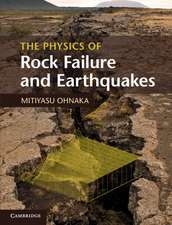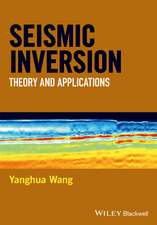Ephemeral Hunter-Gatherer Archaeological Sites: Geophysical Research
Autor Jason Thompsonen Limba Engleză Paperback – 21 iul 2016
- Serves as a practical manual for guiding archaeo-geophysical research design
- Bridges the communication gap between traditional and geophysical archaeologists to contribute to new ways of thinking anthropologically about archaeological geophysics
- Provides a focus on prehistoric open-air ephemeral sites, which are often underrepresented
- Offers an important reference for practicing professionals, instructors, and students in geophysics and anthropology/archaeology, as well as geology
Preț: 235.86 lei
Nou
Puncte Express: 354
Preț estimativ în valută:
45.13€ • 47.12$ • 37.27£
45.13€ • 47.12$ • 37.27£
Carte tipărită la comandă
Livrare economică 08-22 aprilie
Preluare comenzi: 021 569.72.76
Specificații
ISBN-13: 9780128044421
ISBN-10: 012804442X
Pagini: 100
Dimensiuni: 152 x 229 x 8 mm
Greutate: 0.18 kg
Editura: ELSEVIER SCIENCE
ISBN-10: 012804442X
Pagini: 100
Dimensiuni: 152 x 229 x 8 mm
Greutate: 0.18 kg
Editura: ELSEVIER SCIENCE
Cuprins
Chapter 1. Archaeological Geophysics Biases
Chapter 2. Recognizing and Defeating Biases
Chapter 3. Seeing the Forest but Missing the Trees
Chapter 4. Material Signature of Human Behavior: Framing a Hunter-Gatherer AGP Agenda
Chapter 5. Human Material Signatures
Chapter 6. Pattern Recognition and Preliminary Identification
Chapter 7. Simulation Sandbox
Chapter 8. Material Signature of Seasonality at Verberie
Chapter 9. Just for Students
Chapter 10. Questions to Guide Framing Theoretical Perspectives
Chapter 11. Conclusion: We Versus Me
Chapter 2. Recognizing and Defeating Biases
Chapter 3. Seeing the Forest but Missing the Trees
Chapter 4. Material Signature of Human Behavior: Framing a Hunter-Gatherer AGP Agenda
Chapter 5. Human Material Signatures
Chapter 6. Pattern Recognition and Preliminary Identification
Chapter 7. Simulation Sandbox
Chapter 8. Material Signature of Seasonality at Verberie
Chapter 9. Just for Students
Chapter 10. Questions to Guide Framing Theoretical Perspectives
Chapter 11. Conclusion: We Versus Me











